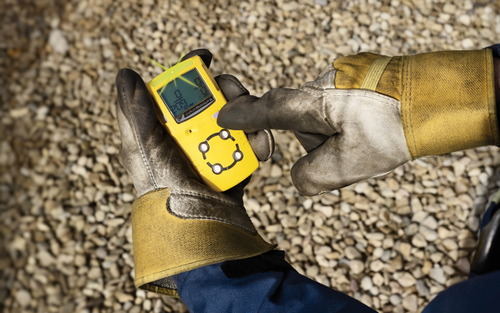How to Clean Your Gas Monitors
Thanks to the COVID-19 pandemic, workplaces are cleaning more thoroughly and frequently. If you’re in an industry that uses gas detection equipment, keeping your gas monitors clean is more important than ever to ensure you’re protected not only from atmospheric hazards, but viral hazards as well. When you clean your gas monitors, keep these procedures and precautions in mind, especially if you’re cleaning to protect against viral transmissions.
Cleaning
It’s important to properly clean gas monitors not only to protect your workers but to also protect the inner workings of the monitor itself. Gas monitors have sensors in them that could be affected by cleaning chemicals and throw off any readings. To clean your monitors, use a mild soap and soft cloth, and be careful not to introduce too much liquid into the monitor. Monitors should be switched off before cleaning and not turned on again until they’re completely dry. Be especially careful if you’re using alcohol-based products: these can cause a temporary response on some sensors and lead to false alarms. Avoid cleaning agents with chlorine or silicones, as these can cause permanent loss of sensitivity.
Servicing
Make sure that your gas monitors and gas monitor parts are inspected and maintained. Gas monitors deteriorate over time, and the degrading sensitivity can be affected by sensor type and working conditions. Continue to perform maintenance according to the product manual and company policy, and be mindful that viral agents could get trapped in instrument pumps or filters. Include the accessories and auxiliary equipment in inspections as well since damage to these components can also affect the instrument. Maintain your regular servicing schedule for your devices: they should be serviced and calibrated at least every six months to ensure they’re still measuring gas concentrations accurately. Only use detectors that are in good condition and functioning properly.
Bump Testing
Regular gas monitor bump testing is strongly recommended because it improves sensor response and makes the detectors compliant, but it becomes especially important when your cleaning regimes change. When you’re bump testing, use calibrated gas mixtures from the gas company (or another gas mixture that gives similar detector responses if that’s not possible—most manufacturers include tables with calibration gas mixtures that the sensors will respond to). Train your employees on the correct use and bump testing of gas detection equipment, especially if there have been changes in your procedures.
Gas Monitor Questions Answered by PK Safety
We’ve been leaders in the safety industry for decades, and for good reason. We have years of onsite experience and continue learning and growing in the face of new technology and industry changes. The coronavirus pandemic was no exception—read our Covid safety plan for keeping workers safe while giving you the safety expertise and service you expect. For product or safety questions, contact one of our safety experts online or by phone at 800.829.9580.
Related Searches
Multi-Gas Detector Calibration,
BW Honeywell Gas Detector Calibration,
Gas Detection Resources,
Gas Monitor Enclosures
Recent Posts
-
Customizing Gas Detectors: Tailoring Solutions to Fit Your Unique Requirements
In today’s diverse industrial landscape, a one-size-fits-all approach to safety simply doesn’t cu …Jul 3rd 2024 -
10 Ways to Prevent Wildfires
You can prevent wildfires by extinguishing flames before you leave the worksite. Avoid practicing …Jul 1st 2024 -
ANSI/ISEA 138 Safety Gloves: Ensuring Hand Protection
The human hand is an anatomical masterpiece and arguably the greatest tool attached to our bodies …Jun 25th 2024





